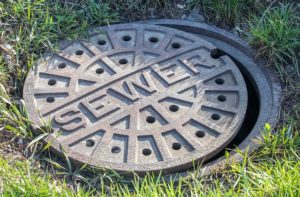
Is it me or does it seem like fatbergs are only getting bigger and badder -- that the problem is only getting worse?
Back in 2013, when the word fatberg hadn’t even made it into the dictionary, a berg found in a sewer in Kingston-Upon-Thames was proclaimed the biggest in British history – the size of a

Since then we’ve been finding fatbergs which are over ten times that. The Whitechapel monster which hit headlines in September 2017 weighed in at 130 tonnes and only held the record for six months before an even bigger berg was found in South Bank in April 2018. In February of this year, a fatberg found in Liverpool trumped all others, weighing in at 400 tonnes.
Though fatbergs are more likely to begin to form on the rugged surfaces of old sewers, and ours are some of the oldest in the world, they aren’t just a British problem. 47% of all sewage clogs in the US, the Environmental Protection Agency reports, are down to FOGs, while big ‘uns have been found in Melbourne and Baltimore, Singapore and Dannevirke, New Zealand, too.
The fatberg problem has gone global and the increasing size of the monsters we are finding is scary.
But Does Size Actually Matter?
That depends.
Of course, the length of a fatberg matters to those water company workers tasked with extracting them: the bigger the berg, the bigger the job.
And size is what many news reports focus on: emphasising how long the berg in question took to be removed from the sewers, how much manpower was needed and how much money was spent.
Those reports make the fight against fatbergs seem like a David and Goliath battle, which makes sewage sound much more interesting and certainly boosts awareness of the issue.

But…
Size Isn’t Everything
And focusing on it mischaracterises the problem.
In the short term, there’s the issue of catastrophising which we’ve talked about before: making fatbergs seem big and scary makes the problem seem insurmountable and so puts some off the idea of making the small adjustments they need to make to help solve the problem.
And there could be long-term consequences of this focus, too.
Fatbergs form gradually over time. The longer they are left the longer and heavier they get. Their size is only a measure of their age, so: our problem with massive fatbergs is really only a problem with old fatbergs.
Water companies around the world, only recently alerted to the FOG problem, are only just beginning to work through a backlog of these old bergs: returning to unclog long-forgotten pipes, removing masses of FOGs which have been growing for decades.
And, one day soon, they’ll remove the last giant berg from the sewers.
We Need To Be Wary Of What Happens Next
If we continue to focus too heavily on the size of bergs, our news reports might end up portraying that removal of the last giant as a final victory: we might feel that the problem is over with and we might just go right back to our old ways, pouring FOGs straight down the drains.
But the problem will not have gone away.
It will just have become all about the small fast-forming bergs which are currently being deemed too tiny to be newsworthy.
Even they can wreak havoc: the BBC reported in 2013 that that puny 15-tonne Kingston-Upon-Thames fatberg was enough to reduce the sewer to 5% capacity; enough to lead to sewage being pumped straight into our waterways.

So:
Size can certainly be impressive and attention-grabbing, but we need to change our ways for good: to keep maintaining our trusty grease traps and always be mindful of what goes down our drains.
Looking at the size and nothing else might make that behavioural change harder to attain.

Leave a Comment
Your email address will not be published. Required fields are marked *